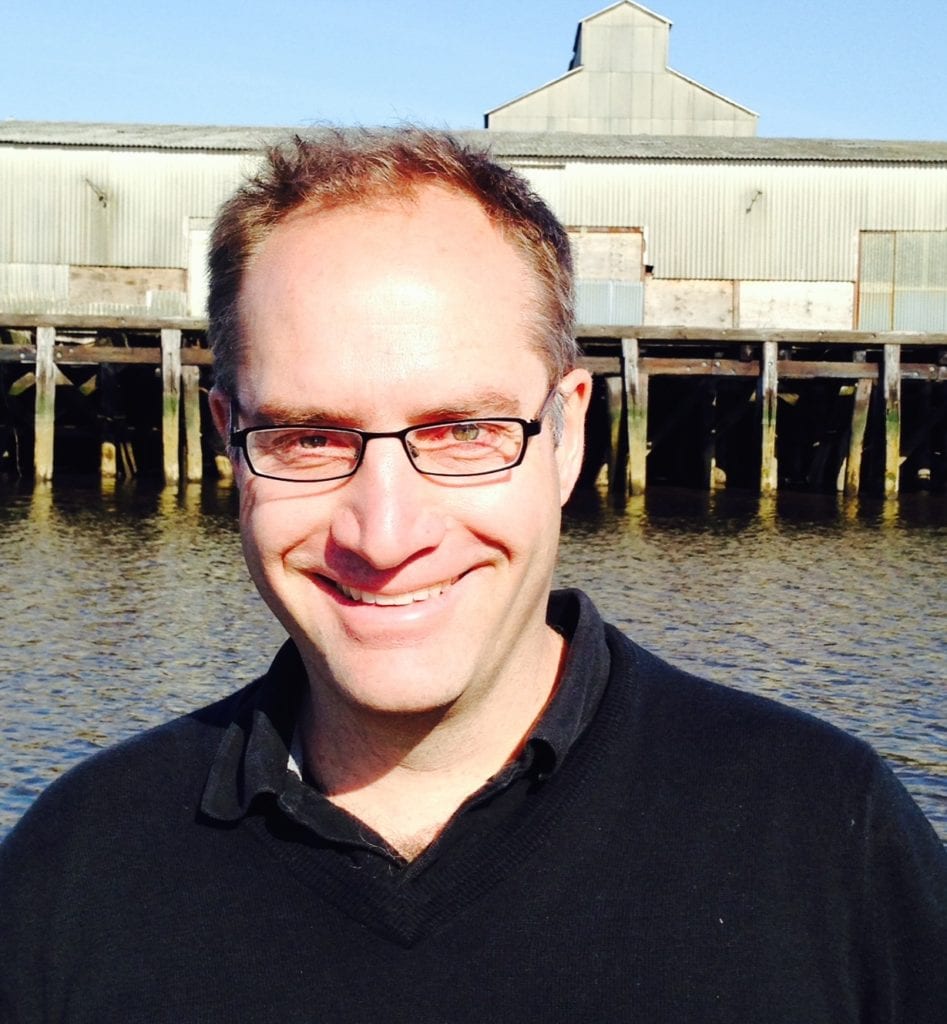Last summer, as Alexander Holthaus demonstrated his team’s senior project inside the Morro Bay harbor, a 200-foot-long dredge vessel loomed over the mechanical engineering student and his wheelchair-accessible standup paddleboard.
Every year, the Army Corps of Engineers sends the vessel, named Yaquina, to Morro Bay to deepen the harbor entrance up to 40 feet. While that ensures boats can safely access the harbor, dredging harbors and building jetties there might also have changed the ebb and flow of tides into the bay, said Stefan Talke, a Cal Poly civil and environmental engineering professor.

“A student and I are still checking our analysis, but preliminary analysis of tidal records from 100 years ago suggests that the tidal range in Morro Bay was about half a foot less than today,” Talke said.
Talke’s tide research was recently the focus of an article in “Knowable,” which was then picked up by BBC News under the headline “How Humans are Altering the Tides of the Oceans.” As the article notes, changing tides can be problematic when they lead to higher peak water levels or faster currents.
“Generally speaking, flooding and erosion are two main costal issues, both for safety and for infrastructure,” Talke said. “Any change to an estuary that alters the likelihood of flooding or erosion is potentially problematic, since our infrastructure – from homes to sea walls – were built with a static, unchanging system in mind.”
Tides are caused by the gravitational pull of the moon and sun. But while we often think of tides as regular and predictable – hence, the use of tide charts – tides are changing in many places as a result of human intervention. In short, if you change the bathymetry of a bay or harbor – basically, the geometric shape of the underwater landscape — you can change the tide. In some estuaries on the East Coast and in Europe, tidal range has more than doubled in the last century.
Along with rising sea levels caused by climate change or local land subsidence, changes to tides can make flooding problems even worse, Talke said.
Talke studied tides as a postdoctoral scholar at Utrecht University in the Netherlands in the mid-2000s. Over the previous century, engineers had dredged the Ems River in Germany, most recently so that newly built cruise ships could navigate it. But those changes caused the tidal range – the distance between high and low tide – to quintuple in the Ems estuary.
“One of the things that I find fascinating is that tide amplitudes – and phases – can change, especially in estuaries,” said Talke, who has published numerous papers about the impact humans have on tides. “When this happens, tidal currents can change, along with erosion and deposition patterns.”
Planners should be aware of potential problems, Talke said, to make sure that, for instance, deepening a channel doesn’t cause flooding or erosion.

“The more we know, the smarter we can design things,” he said.
Not every development will impact tides, Talke said.
“Along the coast, structures, such as the Pismo Pier are probably quite insignificant, relative to the vast size of the tide wave propagating up the coast,” he said. “The story may be different in Morro Bay.”
Fortunately, flooding is not a problem in Morro Bay. But it has been problematic in places like Jamaica Bay in New York, which saw disastrous flooding during Hurricane Sandy and continues to have flooding issues today.
In some cases, Talke added, it might be possible to reverse engineer adverse effects caused by changing tides.
“For example, if flooding during king tides becomes a problem in an estuary, one could in some places reduce tides to historical norms and therefore mitigate the problem,” he said.
Such “nature-based engineering” solutions are being discussed in Jamaica Bay and other places, Talke said.
More discussion will, of course, lead to greater awareness of how changing tides can impact lives. Talke said he was pleasantly surprised the story that described his work was published by the BBC.
“I was alerted to it by an influx of emails from people, including a mariner who had noted changes in the Yukon and Northwest territories since the 1970s and a retired doctor with a beachfront home in Annapolis, Maryland, who was concerned about rising water levels,” he said.


